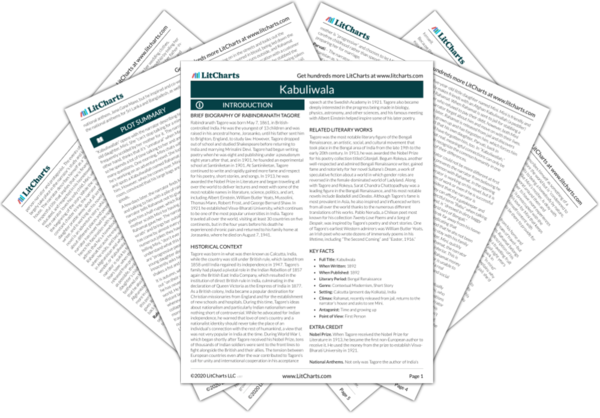Connection
Perhaps the most powerful element of “Kabuliwallah” is the way Tagore portrays the human connection as it transcends social class, time, age, and culture. In the beginning of the story, the unnamed narrator describes the close relationship he has with his five-year-old little daughter named Mini. Mini is friendly and quickly makes friends with an Afghan Kabuliwallah (a peddler) named Rahamat. When Rahamat is sent to jail for stabbing a customer…
read analysis of ConnectionFatherly Love
Love, specifically fatherly love, is one of the central threads of “Kabuliwallah.” The narrator of the story has one child: a precocious five-year-old daughter named Mini who “can’t stop talking for a minute” and frequently visits him in his study to talk and hide from her impatient mother. The narrator is touched by the liking that a local Kabuliwallah (fruit-seller) named Rahamat takes to Mini, and he enjoys…
read analysis of Fatherly LoveCuriosity and Growing Up
One of the characteristics that the narrator and Mini share is their curiosity about the world. They both have a thirst for knowledge and an openness to new experiences, but in their little Calcutta neighborhood, they are stuck in a domestic routine with few opportunities to explore something new. This changes when Mini spots Rahamat, a Kabuliwallah selling fruit in the neighborhood, and calls out to him. The unlikely pair become fast friends. As…
read analysis of Curiosity and Growing Up







